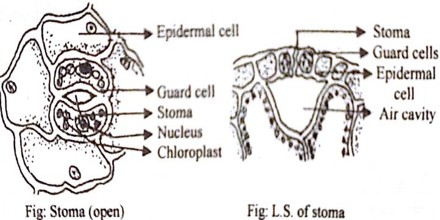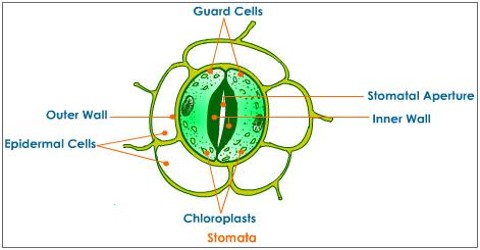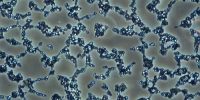Stomata: For gaseous exchange and transpiration, plenty of tiny pores are found in leaves. These tiny pores are known as stomata
Position:
- In the green pans of stem and leaf.
- On the lower epidermis of dorsiventral leaves and on both upper and lower epidermis of isolateral leaves.
- Plenty of stomata are found in the upper epidermis of the floating leaves.
Structure:
- The pore is very minute and surrounded by guard cells.
- The outer wall of the guard cell is thin and the inner wall is thick. The guard cell contains cytoplasm, a nucleus and plenty of chloroplasts
- A large cavity is present below the stoma.

The process of stomatal transpiration:
- The water absorbed by root hairs rises up to the xylem vessels
- The mesophyll cells now swell up by absorbing water and this water reaches to the sub-stomatal chamber present below the stoma coming out of the mesophyll cells in the form of vapour.
- If the stoma remains open and the water vapour pressure within the leaf is greater than the atmospheric pressure, the stored water vapour comes out.
Soil Water → Absorption → Xylem Cavity of Leaf → Air Cavity of Leaf → Outside of Air
The mechanism of opening and closing of stoma:
- Osmosis is the main cause of opening and closing of stomata
- The water from the lateral epidermal cells enters the guard cells through endosmosis and the guard cells bulge out. During bulging of guard cells stomata open because of the fact that the walls of the guard cells adjacent to the stomata are much thicker than the other side. Due to the turgidity, the inner thick walls of the guard cells bend outwards and the stoma opens
- On the other hand, in the daytime, the guard cells lose their turgidity due to exosmosis and become flaccid and the pore remains closed
- Therefore the opening and closing of stomata depend on the turgidity and anatomy of the guard cells.













